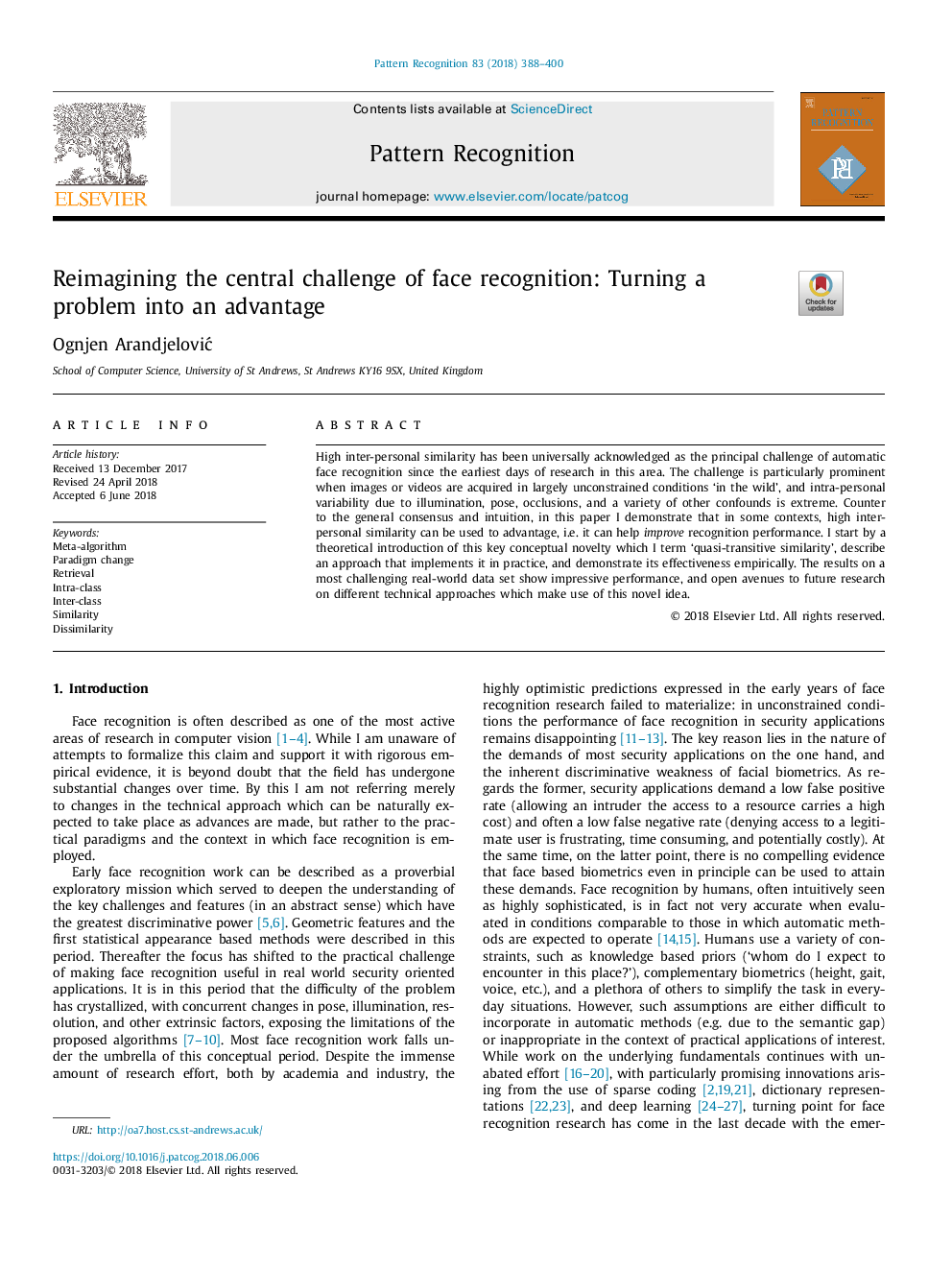| Article ID | Journal | Published Year | Pages | File Type |
|---|---|---|---|---|
| 6938761 | Pattern Recognition | 2018 | 13 Pages |
Abstract
High inter-personal similarity has been universally acknowledged as the principal challenge of automatic face recognition since the earliest days of research in this area. The challenge is particularly prominent when images or videos are acquired in largely unconstrained conditions 'in the wild', and intra-personal variability due to illumination, pose, occlusions, and a variety of other confounds is extreme. Counter to the general consensus and intuition, in this paper I demonstrate that in some contexts, high inter-personal similarity can be used to advantage, i.e. it can help improve recognition performance. I start by a theoretical introduction of this key conceptual novelty which I term 'quasi-transitive similarity', describe an approach that implements it in practice, and demonstrate its effectiveness empirically. The results on a most challenging real-world data set show impressive performance, and open avenues to future research on different technical approaches which make use of this novel idea.
Related Topics
Physical Sciences and Engineering
Computer Science
Computer Vision and Pattern Recognition
Authors
Ognjen ArandjeloviÄ,
